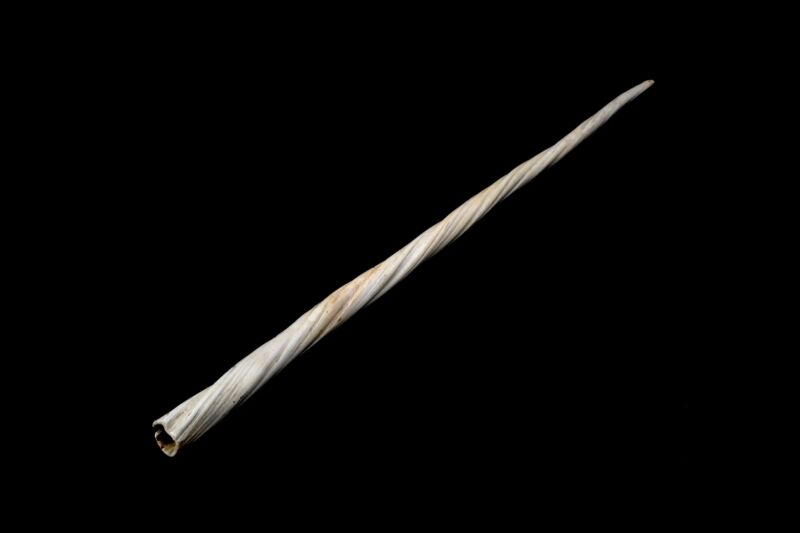Narwhal tusks tell a troubling tale

Enlarge (credit: Science & Society Picture Library | Getty Images)
Researchers have long debated what the 10-foot-long tooth that erupts from a narwhal's head is actually for. Perhaps it has something to do with sexual selection, and males with longer horns attract more females. Or maybe the things sense salinity. Or perhaps a narwhal uses its tusk to flush out prey on the ocean bottom.
Whatever the purpose, scientists know this for certain: the Arctic region, which the narwhals call home, is warming twice as fast as the rest of the planet, and by analyzing these tusks, researchers can glean surprisingly detailed insights into how the animals are dealing with catastrophic change. It's not looking good.
Writing in March in the journal Current Biology, scientists described what they found in 10 tusks collected from animals in northwest Greenland. Because a tusk grows continuously over the many decades of a narwhal's life, the researchers could read the outsized teeth like the rings of a tree. They found that between 1962 and 2000, the mercury in the tusks increased by an average of 0.3 percent a year, but between 2000 and 2010 it increased by 1.9 percent per year. This is consistent with increased mercury discovered in the bodies of other top predators in several regions across the Arctic, possibly due to air pollution blowing in from the south.
Read 13 remaining paragraphs | Comments